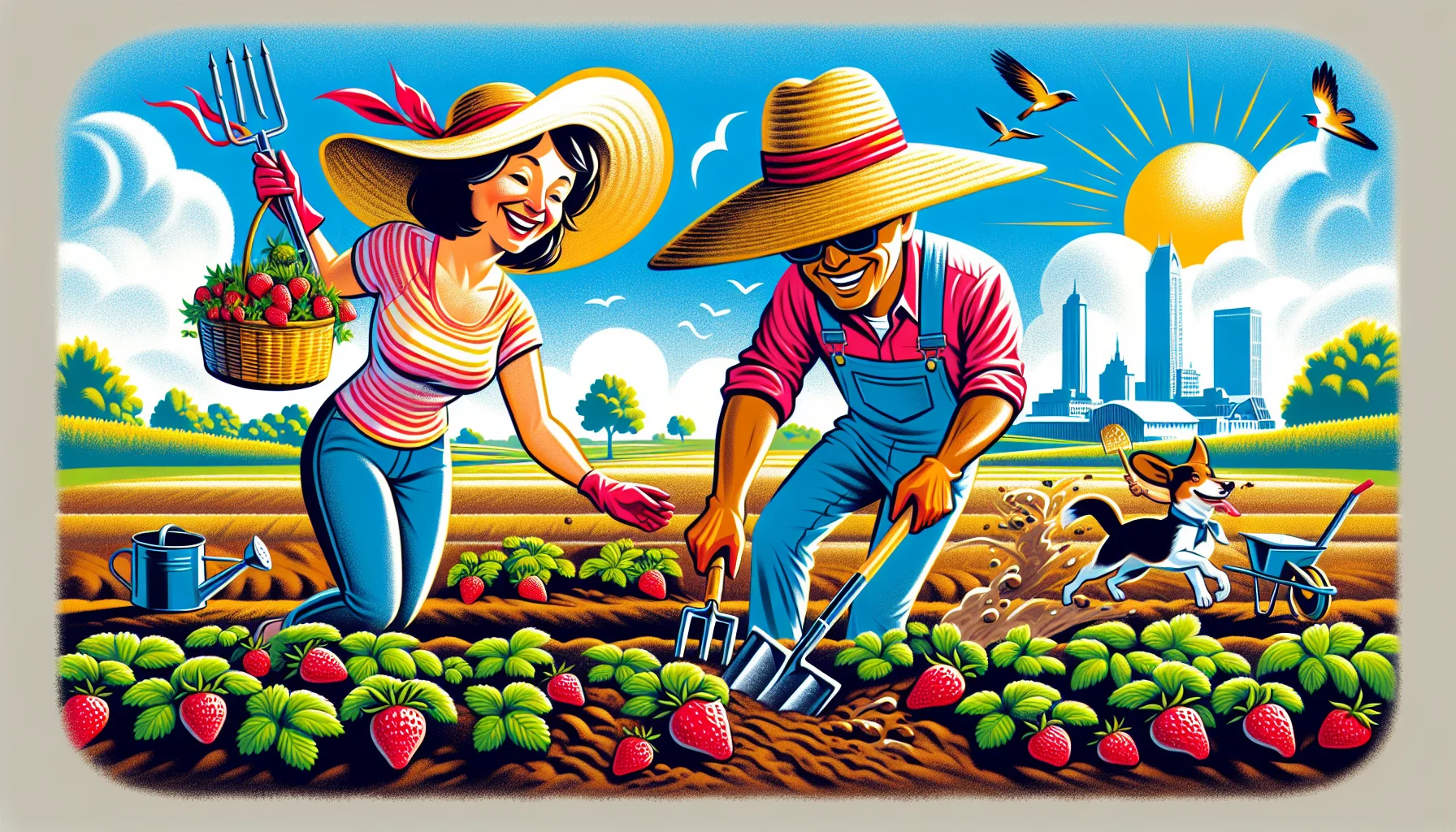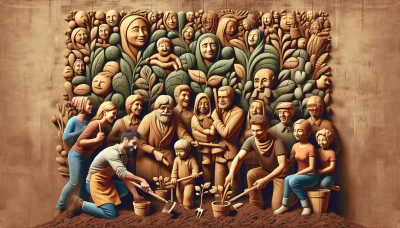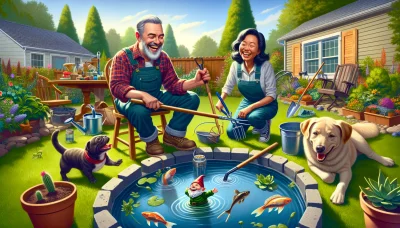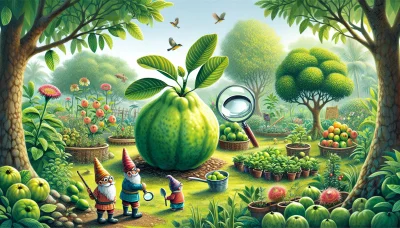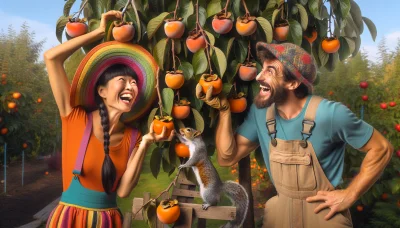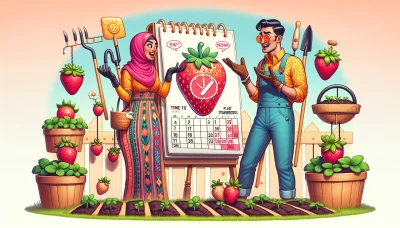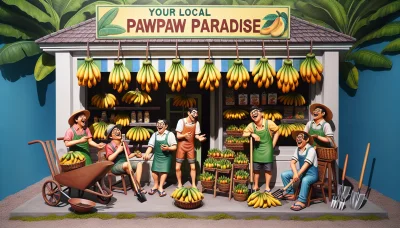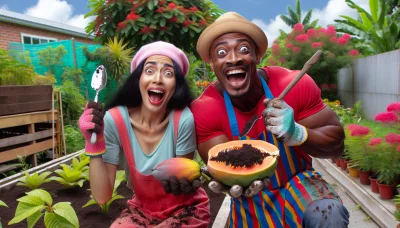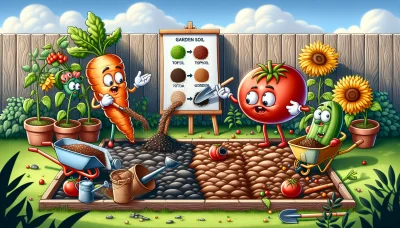Growing strawberries in ohio Quiz
Test Your Knowledge
Question of
Growing Strawberries in Ohio: A Comprehensive Guide
Growing strawberries in Ohio presents a unique blend of opportunities and challenges due to its varied climate. The joy of harvesting your own sweet, sun-ripened strawberries is unparalleled. Ohio's spring and summer provide an excellent growing season, with plenty of sunlight and warmth to nurture these beloved plants. However, gardeners must also navigate the challenges posed by the region's unpredictable weather, including late frosts and humid summers, to ensure a bountiful harvest. This guide aims to equip you with the knowledge and techniques to successfully grow strawberries in Ohio, making the most of the region's growing conditions.
Choosing the Right Strawberry Varieties for Ohio
Selecting the appropriate strawberry varieties for Ohio's unique climate is crucial for achieving a successful harvest. Ohio's weather, characterized by cold winters and warm summers, can pose challenges to strawberry cultivation. Thus, it's important to choose varieties that are well-adapted to these conditions to ensure they thrive and produce bountiful yields. Opting for the right varieties not only enhances the quality and flavor of the strawberries but also improves their resistance to local pests and diseases, leading to healthier plants and more fruitful gardening endeavors.
- ‘Allstar’ - Known for its sweet flavor and resistance to many diseases.
- ‘Earliglow’ - Celebrated for its early ripening and exceptional flavor.
- ‘Jewel’ - Offers large, well-shaped fruits with great taste and versatility.
- ‘Honeoye’ - A hardy variety that produces abundantly in cooler climates.
- ‘Surecrop’ - Lives up to its name with reliable yields and good disease resistance.
Preparing Your Garden for Strawberries
Getting your garden ready for strawberries, especially in Ohio, requires careful attention to soil preparation. The success of your strawberry plants begins with the condition of the soil in which they're planted. Here are the essential steps to prepare your soil, ensuring a fruitful strawberry harvest.
Firstly, it's crucial to test the soil's pH. Strawberries thrive in slightly acidic soil, with an ideal pH range of 5.5 to 6.8. Ohio's soil can vary greatly in pH, so obtaining a soil test from your local extension office is a good starting point. If your soil's pH is too high, incorporating elemental sulfur can help lower it. Conversely, if the pH is too low, applying garden lime can raise it to the desired level.
Following pH adjustment, enriching the soil is the next step. Strawberries benefit from well-draining soil rich in organic matter. You can improve your garden's soil by adding compost or well-rotted manure, which will not only enrich the soil but also improve its structure. This is particularly important in Ohio, where clay soils are common. By incorporating organic matter, you can enhance drainage and aeration, creating an ideal growing environment for strawberry roots.
Finally, ensure that the site you choose for your strawberry garden gets plenty of sunlight and has good air circulation. Avoid low spots where frost can settle and areas that have recently grown tomatoes, peppers, or eggplants, to prevent disease carryover. With the right soil conditions, your strawberries will have a strong foundation for growth and productivity.
Planting and Caring for Your Strawberries
When it comes to planting strawberries in Ohio, selecting the right time and location is crucial for a bountiful harvest. The ideal planting period is early spring, as soon as the soil is workable. Choose a site that receives full sunlight for at least six to eight hours a day, as strawberries thrive in well-lit environments. The soil should be rich, well-drained, and slightly acidic, with a pH between 5.5 and 6.8.
Spacing is an important factor to consider when planting strawberries. For traditional matted row systems, plants should be spaced about 18 to 24 inches apart in rows that are 3 to 4 feet apart. This spacing allows runners, which are stems that grow horizontally and produce new plants, to fill in the space and form a mat. Ensure each plant is set with the crown at soil level and the roots spread out in the planting hole. This promotes healthy growth and prevents rot.
Watering is another critical aspect of strawberry care. Strawberries require about 1 to 1.5 inches of water per week, especially during fruit bearing. It's best to water in the early morning to minimize evaporation and reduce the risk of fungal diseases. Drip irrigation or a soaker hose is ideal for keeping the foliage dry while providing the necessary moisture to the roots.
Mulching plays a dual role in the care of strawberry plants. It helps retain soil moisture, suppress weeds, and keep the fruit clean. Straw is a preferred mulch material for strawberries, as it is light and does not compact easily. Apply a 2 to 3-inch layer of straw around the plants after planting. In preparation for winter, increase the mulch layer to protect the plants from freezing temperatures.
By following these best practices for planting and caring for strawberries, gardeners in Ohio can enjoy a successful and fruitful growing season. Remember, patience and attention to the needs of your plants will yield the sweetest rewards.
Pest Management and Disease Prevention in Ohio
Ohio's strawberry farms face several common pests and diseases that can significantly impact yield and fruit quality. Effective management and prevention strategies are essential for maintaining healthy crops. Among the most prevalent challenges are the strawberry root weevil, the tarnished plant bug, and diseases like powdery mildew and gray mold.
The strawberry root weevil is a notorious pest that targets the roots of strawberry plants, leading to weakened plants and reduced yields. Organic solutions include the use of beneficial nematodes that prey on the weevil larvae in the soil, offering a natural method of control. Chemical options involve applying appropriate insecticides to the soil to target the larvae, though this should be done with consideration to avoid harming beneficial organisms.
Tarnished plant bugs are another common pest, causing damage by feeding on the flowers and developing fruits, leading to misshapen berries. Organic management strategies include maintaining clean field borders to reduce habitat for these bugs and using row covers to protect plants during flowering. Chemical controls can include targeted insecticides, applied carefully to minimize impact on pollinators and other non-target species.
Powdery mildew and gray mold are fungal diseases that thrive in humid conditions and can quickly spread across strawberry fields. For powdery mildew, organic approaches involve using sulfur-based fungicides and ensuring good air circulation around plants. Chemical solutions include the application of systemic fungicides that protect the plants from the inside out. Gray mold control is similar, with emphasis on reducing moisture on plant surfaces through careful watering practices and using straw mulch to prevent fruit from contacting the soil. Both organic and chemical fungicides are available for managing gray mold.
Implementing integrated pest management (IPM) strategies that combine cultural, organic, and chemical methods is the most effective way to protect strawberry crops from pests and diseases in Ohio. Regular monitoring, proper identification of pests and diseases, and timely interventions are key components of a successful IPM program.
Harvesting and Enjoying Your Strawberries
Knowing when strawberries are ripe for picking in Ohio is key to enjoying a bountiful harvest. Look for strawberries that are fully red, without white or green areas, as this indicates they are ripe and ready for harvest. The best time to pick strawberries is in the morning when they are still cool. This not only ensures the best flavor but also extends their shelf life. Once picked, strawberries do not continue to ripen, so it's important to harvest them at the right time.
After harvesting, there are several ways to preserve and enjoy your strawberries. For immediate consumption, simply wash them gently in cold water and enjoy them fresh. To preserve them, strawberries can be frozen, either whole or sliced, on a baking sheet before transferring to a freezer bag. This method preserves their flavor and makes them perfect for smoothies or baking at a later date. Another popular option is making strawberry jam or preserves, which is a delightful way to enjoy the flavors of summer all year round. Lastly, dehydrating strawberries is an excellent method for creating a tasty and healthy snack that is perfect for on-the-go.
